Driving in Germany
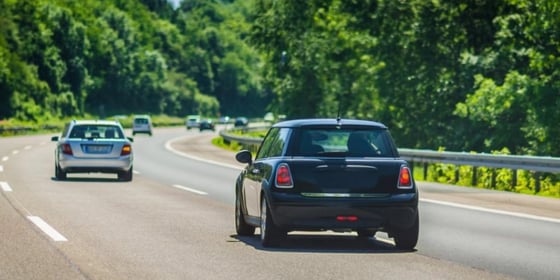
Contents
Driving on the right side of the road & tips on how to drive safely in the country.
We all know that there is the Autobahn in Germany and that there are no speed limits there (at least partially). But what about the rest of the roads?
In this article, we'll give you an overview of the rules of the road, important things to know when driving in Germany, speed limits in and out of cities, and much more!
Germany driving guide
Driving in Germany is very popular among tourists and internationals living there because it is easy to get anywhere by car. If you have a valid driver's license, you can easily enjoy the German Autobahn and drive to your favorite places in no time. In case you'd like to get behind the wheel, make sure you know the rules and familiarize yourself with your car before you take it out of the garage.
So let's get started with this ultimate guide to driving in Germany!
Is driving a car in Germany easy?
Driving in Germany will be easy if you are used to driving on the right.
If you normally drive on the left, you may want to get used to driving on the right side of the road first. You can practice this, for example, in the parking lot or with someone who normally drives on the right.
Are tourists allowed to drive in Germany?
In order to drive in Germany, you must be able to present a valid driver's license.
Anyone with an appropriate permit can drive in the country. If you are a tourist and have a driving permit, go for it! Just note that in most cases you must be over 18 or 21 years old to rent a car. In some instances, you even need to be 25 years or older, just check with one of the car rental providers to verify that.
Note
You are not required to obtain an international driver's license for a shorter stay in the country. However, it may still prove useful as the German police or car rental staff may ask you for a German translation of the driver's license.
Renting a car in Germany - what you should know
- You must be at least 18 years of age, but the age may vary depending on the type of vehicle.
- You will need a full, valid driver's license and usually a passport.
- Most car rental companies make sure that you have held your driver's license for 1 - 3 years.
- Some companies require a credit card for the deposit.
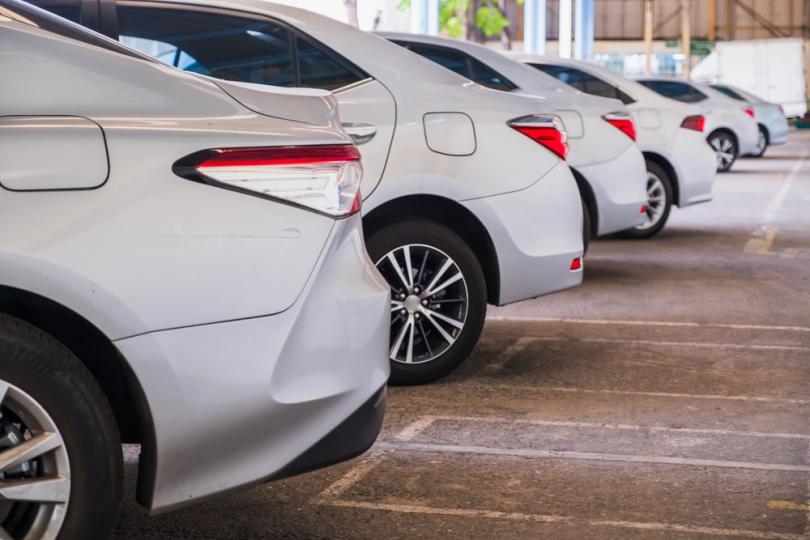
Tips for driving a rental car
- In Germany, you drive on the right side of the road.
- The maximum speed on a freeway (the Autobahn) is typically 130 km/h, and it is rare that there are no limits at all.
- On main roads (Bundesstraßen) outside urban areas, the maximum speed limit is 100 km/h.
- Within townships, the speed limit is 50 km/h.
- In case of emergency, dial 112.
- Seat belts must be worn by both the driver and all passengers.
- The blood alcohol limit for drivers of private vehicles is 0.05 %.
Is it expensive to drive in Germany?
If you are conscious about the money you spend on driving, it won't break your wallet to drive in Germany.
Here are a few tips on how you can save money on the spot:
Gas prices
Fuel is quite expensive in Germany, so be careful never to fill up on the Autobahn, but to pull off the freeway when you see the fuel light come on. Also, refueling on weekends can be more expensive than on weekdays, and it is generally a good idea to fill up your tank between 18:00 and 20:00, but not after 20:00.
Automatic cars
You can probably choose to book a German automatic car or if there is a manual transmission in the car. In case you are comfortable driving with a gear shift, you may want to go with one because it might save you quite a bit of money.
Airport rentals
It may be tempting to rent a car right at the airport. But that will likely drive up the price of driving in Germany. If you have the capacity and time to take public transportation into the city and then rent a car, you will be able to get a better deal.
Tip: If you book your car in Germany for the time there in advance, you will be able to save up to 50% of the rental price!
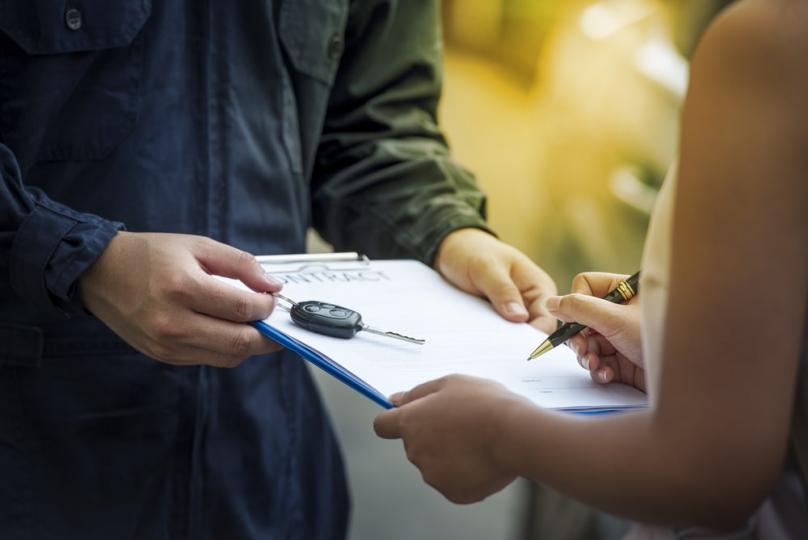
Big cars
Driving around in a van might be the best option for a large group of people. But be aware of the fact that there are quite a lot of small alleys in Germany where a smaller car is much better. Germany is a country with large roads but at the same time very narrow ones. You must also keep in mind that the price of a large rental car in Germany will be much higher.
Car insurance
If you are an expat in Germany or simply a long-term resident and want to buy your own car, you need to take out car insurance. This can be quite expensive or very affordable, as there are a variety of options and providers to choose from. To avoid falling into a price trap, it is best to do your research well before buying car insurance, and if you have a German friend who has knowledge of German car insurance, all the better!
Note
If you are only renting a car in Germany as a tourist, you are probably covered insurance-wise, but it is always better to check with the rental company personally what is covered and what is not in case of damage.
Road types in Germany
If you know the different types of roads in Germany and the speed limit they have, you can find your way around much easier:
Autobahn
When driving, you will see that the freeways are marked with an “A,” for example “A7.” The Autobahn signs are all blue. German freeways are very neat, everything is well signposted, and there are many rest areas along the way.
Tip: It's best to drive slowly and steadily at first until you feel more confident driving the German freeway.
What are the traffic laws and rules in Germany?
There are a lot of things to know about German road traffic regulations.
Take a look at the most important German road traffic regulations here, for example, road signs or whether you need to signal when overtaking:
German road signs
Many of the road signs in Germany may be obvious to tourists, but some might confuse you if you don't know them:
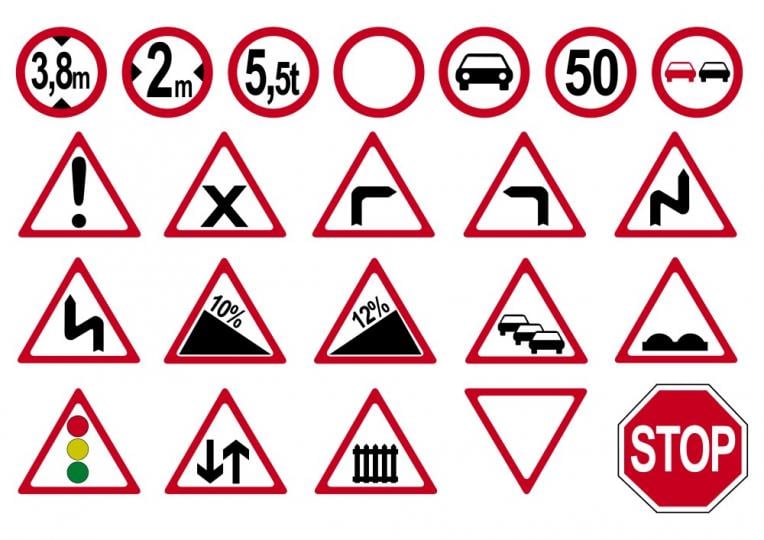
Red lights
In Germany, it is not allowed to run a red light, even in most rural areas. Cameras are set up in various places to convict people who cross red lights.
Flash to overtake and turn
Always flash when starting or completing a turn or passing maneuver. This is the signal other drivers expect so they know you are turning or overtaking. If you forget the above rule, the car behind you may be flashing its headlights briefly. This is also a popular signal on the Autobahn that you should move to the right lane of the road so you can be passed.
Speed limits
Germany is known for having highways with incredibly high-speed limits and even some roads with no speed limit at all. However, there are actually many sections along German highways that have strict speed limits. The speed limits of the roads are prominently displayed, you will not be able to miss them.
There are two standard speed limits:
50 km/h (31 mph) inside built-up areas and 100 km/h (62 mph) outside built-up areas.
Speed limits on the Autobahn
A recommended guideline speed of 130 km/h (81 mph) applies to German freeways.
Driving at higher speeds is not punishable, but the increased danger may result in partial liability for damages. In addition, it is illegal to drive at speeds that extend the vehicle's safe distance beyond the driver's line of sight.
Of course, if traffic signs prescribe a certain speed, you must strictly adhere to it.
Note
There are special cases of speeding in road traffic that can lead to the revocation of the driver's license. This applies to speeding in excess of 30 km/h.
Autobahn rules and safety regulations
- Always drive on the righthand side of the street and overtake on the left.
- As soon as you have finished the passing maneuver, drive to the right again.
- Always use your turn signal when doing so.
- Double-check before changing lanes. Especially when you are changing from the right to the left lane, fast cars can sometimes appear out of nowhere.
- Be aware of a speed limit on freeways. This is especially common in sections with heavy traffic.
- In the event of a traffic jam: Move your vehicle as far as possible onto the hard shoulder so that rescue vehicles can pass easily if necessary.
Tip: You may not even realize how fast you are going. Therefore, always check your side mirrors and blind spots before changing lanes and stick to safe speeds.
Timed parking
A blue sign with a “P” on it indicates that you can park there. In such cases, you can often use a parking disc. This is a blue plate with a movable white scale that has the times on it. When you park in an area marked with the parking disc, it indicates how long you can park for free. Before you leave your car, take out your disc, set it to your arrival time and place it on the dashboard of your car.
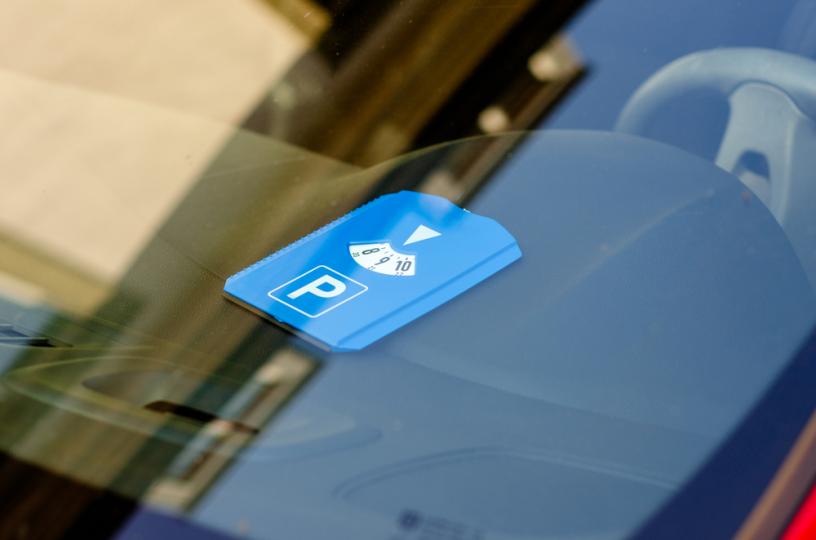
Parking garages
If you want to park in a parking garage, pull a ticket from the machine before entering by pressing the button marked “Drücken.” Keep the ticket with you when you leave the car because you must pay before you return to your car. The prices in a parking garage vary. They range from €1 per half hour to about €1 per 2 hours.
Parking next to the street in Germany for a short amount of time
Most people in Germany park their vehicles next to the roadside. Parking on the side of the street is only allowed in the direction of travel on that side. In one-way streets, parking is allowed on both the right and the left sides, as traffic flows in the same direction on both sides. If you park on the side of the street, you often have to buy a parking ticket - but for short periods of time, parking alongside the road is sometimes free.
The left lane is for passing
The left lane on the Autobahn is for passing. Therefore, only move into this lane if you want to overtake someone yourself. Afterward, you should move back into your lane.
Tip: It is always better to look in the mirror twice to see if the lane is clear, because you may underestimate how fast the car is coming.
Right of way at the intersection
The rules for crossing at intersections are quite complicated in Germany. In most cases, drivers coming from the right have right of way in Germany. However, this rule can be overridden by a diamond-shaped sign that indicates right-of-way roads at intersections. This sign is not to be confused with the give way sign in Germany, which is an inverted triangle with a white inside and a red border.
Right of way at the intersection
The rules for crossing at intersections are quite complicated in Germany. In most cases, drivers coming from the right have right of way in Germany. However, this rule can be overridden by a diamond-shaped sign that indicates right-of-way roads at intersections. This sign is not to be confused with the give way sign in Germany, which is an inverted triangle with a white inside and a red border.
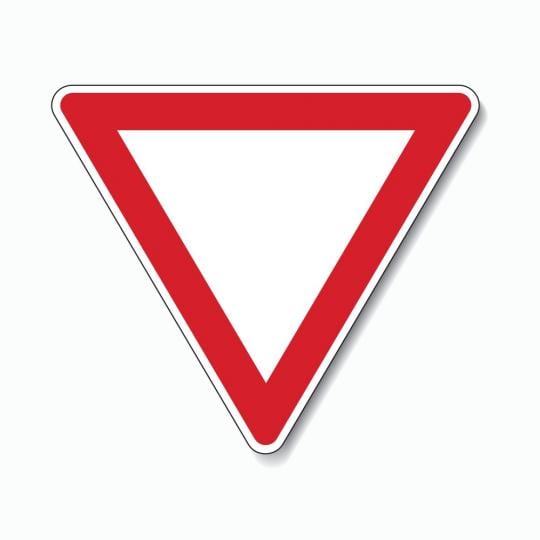
Compulsory seat belt use
Seat belts are compulsory in the front and rear seats of all German vehicles. Anyone caught not wearing a seat belt will be fined. Children under 12 must always ride in the back seat. A child younger than 12 years and smaller than 150 cm must be transported in a child seat or child restraint.
Car lighting
If the vehicle's lights are defective in any way, you must not drive at night. It is strictly forbidden in Germany to drive with only parking lights on.
First aid kit
All cars must have a first aid kit and a portable red warning triangle in the trunk. When a car has to stop on a German highway, the triangle is placed behind the vehicle to warn oncoming drivers. A yellow high-visibility vest must be worn when doing so.
Drinking and driving in Germany
If you want to drive in Germany, you need to know the laws about being under the influence of alcohol while driving. Germany has a point system that punishes drunk drivers particularly severely. In Germany, the blood alcohol limit is 0.5 mg of alcohol per mm of blood. For an average-sized person, that's just two small beers.
What do I need to know before driving in Germany?
Roads in Germany are impeccably maintained, very well signposted, and some have truly stunning scenery.
With its fantastic highways and spectacular landscapes, Germany is, therefore, a prime destination for road trips. But like most other countries, Germany has its own rules for drivers. So if you're planning a visit, you should know the differences between driving in your home country:
- In case of an emergency, you can dial 112 from anywhere.
- You must be at least 18 years old and have a valid driver's license to legally drive in Germany.
- In Germany, drivers drive on the right and overtake on the left.
- When traffic is backed up and two or more lanes are going in the same direction, vehicles on the righthand side may overtake vehicles on the left.
Who has priority?
- At intersections and junctions, traffic coming from the righthand side generally has the right of way.
- Vehicles turning left at an intersection must yield to oncoming cars.
- All road users must give way to emergency vehicles with blue flashing lights.
- Traffic in a traffic circle has priority unless otherwise indicated. Drivers must flash their lights before exiting the rotary, but should not do so when entering it.
- Drivers must not enter an intersection in heavy traffic until their exit is clear. This applies even if they have the right of way or the light is green.
- Buses and school buses have priority when leaving bus stops, while vehicles must yield when a bus has signaled its intent to proceed.
What are the safety rules in the car?
- The driver is responsible for ensuring that all passengers under the age of 18 are properly restrained in the car.
- Failure to wear a seat belt may result in a fine.
How do traffic lights work?
In Germany, the international three-color traffic light system is used.
A red traffic light with a green arrow pointing to the righthand side allows you to turn right on condition that you give way to other road users and pedestrians.
How are speed limits regulated in Germany?
The metric system is used for all road signs, i.e. speed restrictions and other traffic signs, including distance information, are indicated in kilometers and meters.
- Inside built-up areas: 50 km/h
- Outside built-up areas: 100 km/h
- Freeways: 130 km/h (recommended)
What are the parking regulations in Germany?
In Germany, a vehicle is considered parked when it has been stationary for more than 3 minutes.
Parking is not permitted in places marked with a no parking sign, within 5 meters of crosswalks and intersections, in narrow streets or where visibility is restricted, less than 10 meters from traffic lights, at cab ranks, within 15 meters of bus stops, or other public traffic areas, or in front of property entrances.
Parking violations can be punished by fines ranging from €10 to €35. The cost of recovering an impounded vehicle can be up to €300.

Driving in Germany final checklist
In addition to essential documents (for tourists, that would be a valid driver's license and passport), motorists are required by law to carry the following items:
- Reflective high-visibility vests
- Warning triangle
- First-aid kit (only required for four-wheeled vehicles registered in Germany)
- Winter tires (in Germany, all vehicles must be equipped with winter or all-season tires in winter conditions)
FAQ
What are the statistics on drunk driving in Germany?
What are the most important rules for driving in Germany?
- In Germany, you drive on the righthand side of the street.
- Overtake to the left of the other vehicle in moving traffic.
- The driver must carry their driver's license, registration certificate and insurance documents in the vehicle.
- It is forbidden to sit behind the wheel with headphones.
- Cellphones may only be used with a hands-free system.
- The use of high beams is prohibited in built-up areas.
- Anyone involved in an accident must stop, secure the scene of the accident and call the police: 110.
- If you are injured, give first aid at the scene of the accident and call an ambulance: 112.
Do I need an international driving permit for Germany?
Upon entering Germany, you may drive for up to six months with your valid driver's license if you plan to stay in Germany only temporarily.
This might also be of interest to you
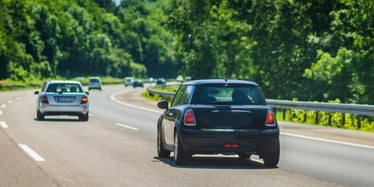
Driving in Germany
Driving on the right side of the road & tips on how to drive safely in the country. We all know that there is the Autobahn in Germany and that there...


